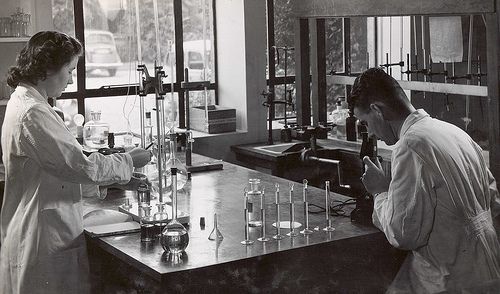Why the National Institute of Health matters
Health is the foundation of human progress. Without it, innovation, education, and even daily life would struggle to move forward. In today’s rapidly evolving world, where new diseases emerge and healthcare systems are under constant pressure, the role of strong health research institutions has never been more critical. Among these, the National Institute of Health (NIH) stands as one of the most respected, powerful, and influential organizations dedicated to advancing medical science and improving human health.
The very mention of the National Institute of Health sparks recognition across scientific, medical, and policy-making communities. For over a century, it has been at the forefront of groundbreaking discoveries, life-saving treatments, and global collaborations. From leading the fight against infectious diseases like HIV/AIDS, influenza, and COVID-19, to spearheading research in genetics, neuroscience, and cancer, the NIH has shaped the way we understand health and disease.
But the story of the National Institute of Health is not just about science—it is about people. It is about the scientists who dedicate their lives to research, the doctors who apply new findings in clinical practice, the policymakers who rely on its data, and most importantly, the millions of patients whose lives are directly touched by its work.
In this blog, we will explore the history, mission, structure, research areas, breakthroughs, challenges, and future of the National Institute of Health. We will look at how it has grown from modest beginnings into a global leader in medical research, how it supports education and training, and why it remains central to the future of global healthcare.

So, let’s begin this journey of understanding the National Institute of Health—its past, its present, and its future.
Origins and History
The beginnings of what we now call the National Institute of Health can be traced to the late 19th century, a time when medicine was still developing and infectious diseases were among the leading causes of death. In 1887, a small experimental lab was started on Staten Island, New York, as part of the Marine Hospital Service. Its original task was simple yet critical: study dangerous microbes and find ways to protect the public.
Over the next few decades, the laboratory steadily expanded. As new epidemics emerged—such as the 1918 influenza pandemic and widespread tuberculosis—the need for advanced biomedical research became undeniable. The laboratory was soon relocated to Washington, D.C., and later found a permanent home in Bethesda, Maryland. A defining moment came in 1930, when U.S. lawmakers passed the Ransdell Act, officially renaming the Hygienic Laboratory as the National Institute of Health. This marked its evolution from a small government lab into a national symbol of scientific advancement.
From that point forward, the NIH grew alongside the challenges it was called to face. During World War II, its researchers supported the war effort by developing treatments and vaccines for military personnel. In the decades after the war, the institute transformed into a broad system of specialized centers, each dedicated to tackling specific health concerns such as cancer, mental illness, cardiovascular disease, and infectious outbreaks. By the early 21st century, the NIH had become a trusted global partner in science, working with universities, hospitals, and international health agencies to confront new crises—including the COVID-19 pandemic.
The journey of the NIH reflects the broader story of medicine itself: constant adaptation, resilience in the face of crises, and a commitment to using knowledge to improve lives. From a single lab in the 1800s to a global leader in medical research, its history demonstrates how small beginnings can spark worldwide impact.

Mission and Vision
At its core, the National Institute of Health exists to advance knowledge of life and health and to ensure that discoveries in science translate into longer, healthier lives for people everywhere. Its mission is not limited to treating disease after it appears; it also emphasizes prevention, innovation, and the search for solutions that improve quality of life on a broad scale.
The institute’s long-term vision is ambitious: to bridge the gap between the lab and the patient’s bedside, ensuring that scientific progress is not trapped in journals but reaches the people who need it. By funding diverse research projects, supporting clinical trials, and training the next generation of health leaders, the NIH positions itself as both a driver of innovation and a guardian of public health.
This mission is guided by values such as integrity, accountability, and global collaboration. The NIH openly recognizes that the world’s toughest health problems—whether pandemics, chronic illness, or genetic disorders—cannot be solved in isolation. For this reason, it builds partnerships with universities, research institutions, and healthcare providers across the globe. Working collectively allows it to accelerate discovery and respond quickly to crises.
In short, the NIH’s mission and vision are not just about science; they are about impact. They remind us that every breakthrough has a human face behind it—families spared from disease, patients living longer lives, and communities given hope through the promise of research.

Structure and Organization
The National Institute of Health is not a single building or office—it is a vast ecosystem made up of multiple institutes and centers, each specializing in different areas of medical science. Together, they form a coordinated network dedicated to uncovering new knowledge and translating it into better healthcare.
At the top level, the NIH operates under the U.S. The Department of Health and Human Services has leaders in place to direct its goal and manage how money is spent. But what makes the NIH unique is its decentralized approach. Instead of concentrating on one area, it divides its efforts into over two dozen institutes and centers, each focusing on specific health challenges. For example, one may concentrate on cancer research, another on heart and lung diseases, and yet another on neurological disorders.
This structure ensures that no area of human health is overlooked. By having specialized divisions, researchers can dedicate their full attention to a particular field while still collaborating across departments when challenges overlap. For instance, studies on genetics often connect with cancer research, and work on infectious diseases might tie into mental health or pediatric care.
Supporting this organizational framework are thousands of scientists, clinicians, and staff members who contribute daily to advancing health knowledge. The NIH also manages grant programs that extend beyond its own walls, providing funding to universities, hospitals, and research labs across the country and around the world. In this way, its structure acts as both a research powerhouse and a financial engine that drives global biomedical innovation.
Research Areas and Focus
The scope of research at the National Institute of Health is incredibly broad, reflecting the many dimensions of human health. Its work ranges from studying the tiniest genetic markers inside our cells to analyzing public health issues that affect entire populations. This dual focus—micro to macro—has made the NIH a leader in both scientific discovery and practical healthcare solutions.
Some of the core areas of research include:
- Cancer and chronic diseases: Developing new treatments, prevention strategies, and early detection tools for illnesses like cancer, diabetes, and heart disease.
- Infectious diseases: Investigating viruses, bacteria, and emerging pathogens, while working on vaccines and treatments that can curb outbreaks before they spread widely.
- Genetics and precision medicine: Exploring how DNA and genetic variation influence health, with the aim of creating personalized treatment plans tailored to individual patients.
- Neuroscience and mental health: Advancing our understanding of the brain, mental disorders, and neurological conditions such as Alzheimer’s, Parkinson’s, and depression.
- Child and maternal health: Ensuring healthier beginnings for children by studying pregnancy, early development, and pediatric illnesses.
- Aging and longevity: Researching how people age and how to improve quality of life in later years, including studies on dementia, mobility, and age-related diseases.
The NIH is also forward-looking, with increasing attention on new frontiers like artificial intelligence in medicine, regenerative therapies, and the study of environmental influences on health. What makes its research especially powerful is its integration of lab science with clinical trials, ensuring that discoveries are tested in real-world settings and not just left in theory.
Breakthroughs and Achievements
The National Institute of Health has played a central role in some of the most important medical discoveries of the last century. These achievements are not only milestones in science but also turning points in the lives of millions of people around the world.
One of its most celebrated contributions has been in the development of vaccines. From early work on polio to more recent breakthroughs in mRNA-based COVID-19 vaccines, the NIH has helped protect generations from deadly infectious diseases. These successes illustrate how research in laboratories can be translated into tools that save lives on a massive scale.
It supported pioneering studies that revealed how cancer develops at the cellular level and funded treatments that have dramatically increased survival rates. Its Cancer Moonshot initiative is a prime example of how the institute invests in long-term, ambitious projects aimed at curing or preventing one of humanity’s greatest health challenges.

The NIH has also been at the forefront of genetics research. The Human Genome Project, which mapped the entire human DNA sequence, was a landmark effort that reshaped the future of medicine. Today, that achievement underpins precision medicine, where treatments are tailored to an individual’s genetic profile rather than a one-size-fits-all approach.
Other notable contributions include advances in HIV/AIDS research, neuroscience discoveries that have deepened our understanding of the brain, and life-saving work on heart disease treatments. Each of these breakthroughs demonstrates the NIH’s ability to anticipate challenges, invest in science, and deliver real-world impact.
Role in Education and Training
While much of the NIH’s reputation comes from its research, its role in education and training is equally significant. The institute understands that scientific progress depends on nurturing new generations of researchers, doctors, and health leaders who will carry the work forward.
The NIH runs a wide range of programs designed to support students, early-career scientists, and experienced professionals alike. Through fellowships, scholarships, and postdoctoral opportunities, it provides hands-on training in world-class laboratories. These programs not only build technical skills but also cultivate the curiosity, resilience, and ethical responsibility that science demands.
For medical professionals, the NIH offers continuing education opportunities that help clinicians stay updated with the latest discoveries. This ensures that findings in the lab do not remain abstract concepts but are applied in real-world healthcare settings. By creating bridges between research and practice, the institute strengthens the overall healthcare system.
The NIH also prioritizes diversity in its training initiatives. Recognizing that science benefits from a wide range of perspectives, it actively encourages participation from underrepresented groups in biomedical research. This inclusive approach not only expands opportunities but also enriches the quality of ideas and solutions generated.
In essence, the National Institute of Health is not just a place where discoveries are made—it is a training ground where the next generation of innovators is prepared. By investing in people as much as in projects, it ensures that its mission of improving health will continue well into the future.
Funding and Support
Behind every groundbreaking discovery at the National Institute of Health lies a powerful system of funding and support. Unlike many research organizations that rely solely on private investment, the NIH is largely publicly funded, which makes it accountable to society as a whole. This financial structure ensures that research priorities align with the nation’s most pressing health challenges rather than short-term commercial interests.
A significant portion of the NIH’s budget goes into grant programs. These grants are not limited to National Institute of Health laboratories; instead, they are distributed to universities, hospitals, and independent research centers across the United States and beyond. In fact, much of the biomedical research in America is made possible through NIH grants. By supporting thousands of projects each year, the institute creates a ripple effect, strengthening the entire ecosystem of health research.
The NIH also funds large-scale clinical trials that test new drugs, therapies, and medical devices. These studies are critical for translating scientific theories into real treatments that doctors can use in practice. Additionally, the institute invests in cutting-edge technologies—from genomic sequencing tools to advanced imaging systems—that empower researchers to push the boundaries of science.
Importantly, NIH funding is not just about money; it is about trust and vision. Each grant represents confidence in researchers’ potential to generate knowledge that will benefit humanity. This model of public investment in science is one of the reasons the U.S. has remained a global leader in medical innovation for decades.
National and Global Impact
The reach of the National Institute of Health extends far beyond the walls of its campuses. At the national level, it serves as the backbone of biomedical research in the United States, shaping healthcare policies, advancing new treatments, and ensuring that discoveries are integrated into hospitals and clinics. Its work helps determine everything from how cancer is treated to how mental health is approached in public health programs.
Globally, the National Institute of Health is a trusted partner in tackling shared health challenges. It collaborates with the World Health Organization, foreign governments, and international universities to respond to pandemics, study rare diseases, and develop solutions that benefit people across borders. During crises such as the Ebola outbreak and the COVID-19 pandemic, the NIH played a central role in research efforts that had worldwide implications.
The institute’s global footprint also extends to training and capacity building. Many international researchers receive NIH fellowships, gaining access to advanced training they can bring back to their home countries. This not only strengthens global scientific networks but also helps build healthcare capacity in regions that need it most.
On a broader level, the National Institute of Health contributes to diplomacy by showing how science can serve as a bridge between nations. Collaborative research projects often succeed in uniting countries around shared goals, even when political relationships are strained. In this way, the NIH is not only a scientific leader but also a quiet but powerful force in global cooperation.

The Future of the National Institute of Health
Looking ahead, the National Institute of Health faces both tremendous opportunities and complex challenges. Medicine is entering a new era where technology and biology are increasingly interconnected, and the NIH is at the center of this transformation.
One major focus for the future is precision medicine. Instead of treating patients with generalized approaches, researchers are developing methods to tailor treatments to individual genetic profiles, lifestyles, and environments. This could mean more effective therapies with fewer side effects, revolutionizing how diseases like cancer, diabetes, and heart conditions are managed.
Emerging technologies will also reshape the way the National Institute of Health conducts research. Artificial intelligence, big data analytics, and machine learning are enabling scientists to process vast amounts of health data more quickly than ever before. Similarly, breakthroughs in regenerative medicine, stem cell therapies, and gene editing are opening doors to treatments once thought impossible.
Another key area for the future is preparing for global health threats. Pandemics like COVID-19 highlighted the urgent need for rapid research responses and international cooperation. The NIH is investing heavily in developing flexible systems that can quickly pivot to address new outbreaks, whether they stem from viruses, bacteria, or other emerging threats.
Of course, the future also brings challenges. Ethical concerns around gene editing, privacy issues with health data, and questions about equitable access to treatments will continue to shape National Institute of Health work. Yet, its long-standing reputation for integrity and innovation suggests that it is well-positioned to guide medicine through these uncharted waters.
In essence, the NIH’s future will be defined by its ability to combine scientific ambition with social responsibility—ensuring that discoveries not only advance science but also create a healthier, more equitable world.
Criticisms and Challenges
Despite its achievements, the National Institute of Health is not without criticism. As the largest funder of medical research in the United States, it often finds itself at the center of debates about priorities, funding allocation, and transparency.
One recurring critique is about how funding is distributed. With thousands of researchers competing for limited grants, some argue that the system favors established scientists and institutions over younger or smaller teams with innovative ideas. Others raise concerns that certain diseases receive more attention because of political or public pressure, leaving rare conditions underfunded.
Ethical questions also arise in areas like genetic research, animal testing, and human clinical trials. Balancing the pursuit of knowledge with respect for ethical boundaries is a challenge the National Institute of Health constantly navigates. Missteps in these areas can lead to public mistrust, which is especially concerning for an organization that relies heavily on taxpayer support.
Another challenge is accessibility and equity. While National Institute of Health -backed discoveries often lead to new treatments, the cost of those treatments can place them out of reach for many patients. Critics argue that more effort should be made to ensure that the benefits of publicly funded research are available to all, not just those who can afford advanced care.
Internally, the National Institute of Health must also grapple with bureaucracy. With so many institutes and centers under its umbrella, coordination can be complex, sometimes slowing down decision-making. In a world where health crises can emerge rapidly, efficiency is as important as accuracy.
Despite these challenges, it is important to note that criticism often reflects the immense expectations placed on the NIH. As the world’s leading biomedical research agency, it is held to very high standards—standards that, more often than not, it has worked hard to meet.
Inspiring Stories
Beyond statistics, discoveries, and large-scale initiatives, the National Institute of Health is ultimately about people—patients whose lives have been saved, families given hope, and scientists whose dedication has led to breakthroughs. These stories bring to life the human side of biomedical research.
One powerful example comes from the fight against HIV/AIDS. In the 1980s, when the disease was poorly understood and feared worldwide, National Institute of Health-supported researchers worked tirelessly to uncover its causes and develop treatments. Today, thanks in part to those efforts, HIV is no longer the death sentence it once was. Lifesaving antiretroviral therapies allow millions of people to live long, healthy lives. Patients who once faced despair now have futures, careers, and families because of the research driven by NIH.
Another inspiring story lies in cancer treatment. Many survivors credit National Institute of Health-funded clinical trials for their recovery. For instance, targeted therapies developed with National Institute of Health support have transformed leukemia treatment, turning once-fatal diagnoses into manageable conditions. Hearing directly from patients who say, “I’m alive because of this research,” underscores the true value of scientific investment.
Stories also come from researchers themselves. Young scientists, often supported by National Institute of Health fellowships, describe how access to cutting-edge labs and mentorship helped them pursue groundbreaking studies. For them, the NIH is more than an institution—it’s a platform that amplifies their passion and gives them the tools to make a difference.
These stories highlight a simple truth: behind every study and data set are human lives. The work of the NIH is not abstract—it is deeply personal, touching millions in ways that statistics alone cannot capture.

The National Institute of Health and Society
The influence of the NIH extends well beyond laboratories and hospitals; it is woven into the fabric of society itself. By shaping research agendas, funding large-scale studies, and informing public health policy, the institute plays a critical role in how communities approach healthcare.
One clear example is public awareness campaigns. The National Institute of Health regularly shares guidance on issues like nutrition, mental health, exercise, and disease prevention. These resources empower individuals to take control of their health, making the institute not only a driver of scientific discovery but also a trusted public educator.
The NIH also shapes policy indirectly. Its research findings often guide lawmakers, healthcare providers, and insurance companies in deciding what treatments should be prioritized and how health systems should allocate resources. For instance, findings on the dangers of smoking and the benefits of early cancer screenings have influenced national health strategies for decades.
Culturally, the NIH helps build trust in science. At a time when misinformation can spread rapidly, the institute serves as a beacon of credibility. By making research transparent and accessible, it bridges the gap between complex science and public understanding.
Finally, the NIH contributes to equity in healthcare. Through its grants and outreach, it works to reduce health disparities across communities, ensuring that advances in medicine are not limited to privileged groups but reach underserved populations as well.
Conclusion
From its early days as a small laboratory studying infectious diseases to its current role as a global leader in biomedical research, the NIH has consistently stood at the crossroads of science and society. Its mission has remained clear: to expand knowledge, improve health, and reduce suffering for people everywhere.
Throughout its history, the NIH has driven discoveries that transformed once-deadly illnesses into manageable conditions, given hope to millions of patients, and inspired generations of scientists to pursue breakthroughs. It has shown that health is not just about treating disease but about prevention, education, and equity. By funding research, shaping policy, and engaging with communities, the NIH continues to prove that medical science can serve as a powerful force for humanity.
As we look ahead, the future of health will bring new challenges—emerging diseases, genetic therapies, mental health crises, and global health disparities. But the NIH remains prepared to meet these obstacles with the same determination and innovation that have defined it for over a century.
The story of the NIH is ultimately about people: the patients whose lives have been saved, the researchers who dedicate their careers to discovery, and the society that benefits from their work. It is a reminder that investment in science is an investment in life itself.
Now, the question turns to you, the reader:
👉 How do you think the National Institute of Health should prioritize its efforts in the future—should it focus more on curing existing diseases, preventing new ones, or addressing health inequalities around the world?
Your thoughts matter, because the future of health is not shaped by institutions alone, but by the voices and choices of all of us.
Learn MoreMore Blogs
